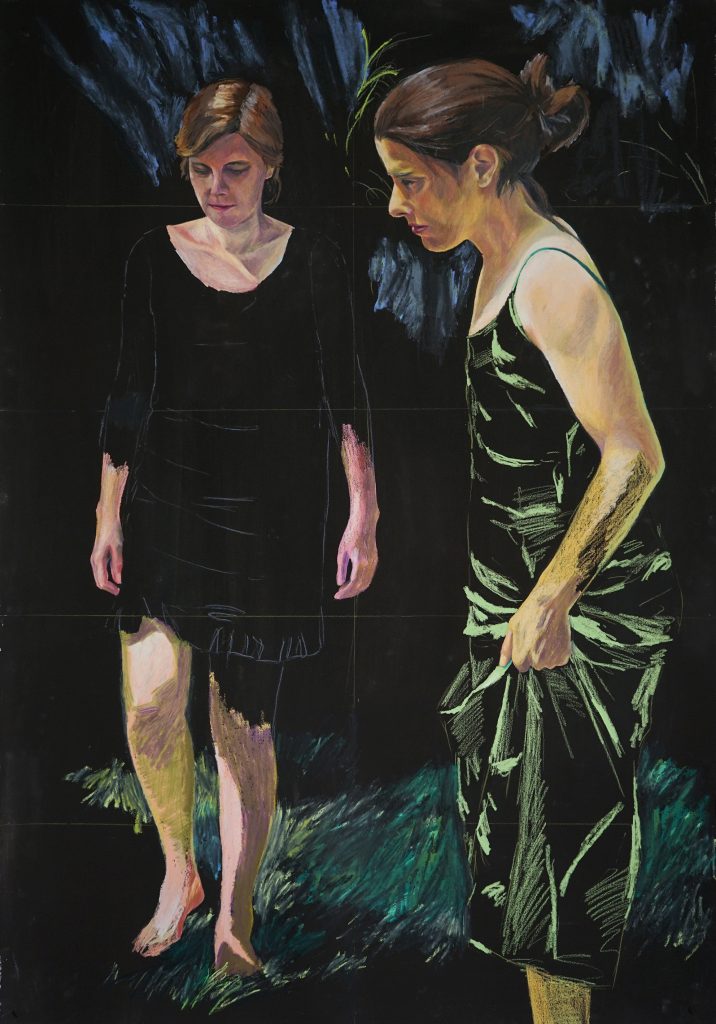Whilst erasure remains impossible in engraving, Lucile Piketty is nevertheless able to defy the technique with a play on transparencies, black and grey nuances, and novel printing methods on Japanese paper. Drawing inspiration from her memories of long walks among the Saint-Germain-en-Laye woods, Lucile Piketty imposes her personal—even autobiographical—quest onto her engravings. She reimagines the ordinary and the mundane with a uniquely bizarre, marvelous, and hallucinatory dimension. Wavering
between control and coincidence, she materializes layers of time, of the forgotten and memorized. Her landscapes shift from the city to the forest, from nature to history, and from vegetal to concrete.
If the purpose of engraving is ultimately to create an image, then she has succeeded in demonstrating its specificity with a velvety and foamy feel through her drypoint engraving technique. Somewhere between shadow and light, desire and repulsion, the forest—often a magical setting in fairy tales—for Lucile Piketty, embodies the place of metamorphosis, and instead fascinates her as an ambivalent and troubling motif. To her, the subjective exploration of a forest voyage is far from a simple backdrop. Her scenery stimmung, dreamlike and phantasmagorical, is composed of multiple stories enhanced by the graphic
presence of naked, black, and somber trees. Through her cinematographical and literary universe, Lucile Piketty directs our observational experience beyond the engraving itself.
Marianne Derrien, Casa de Velázquez’s catalog, 2018
the original text was translated to English by sobering galerie
